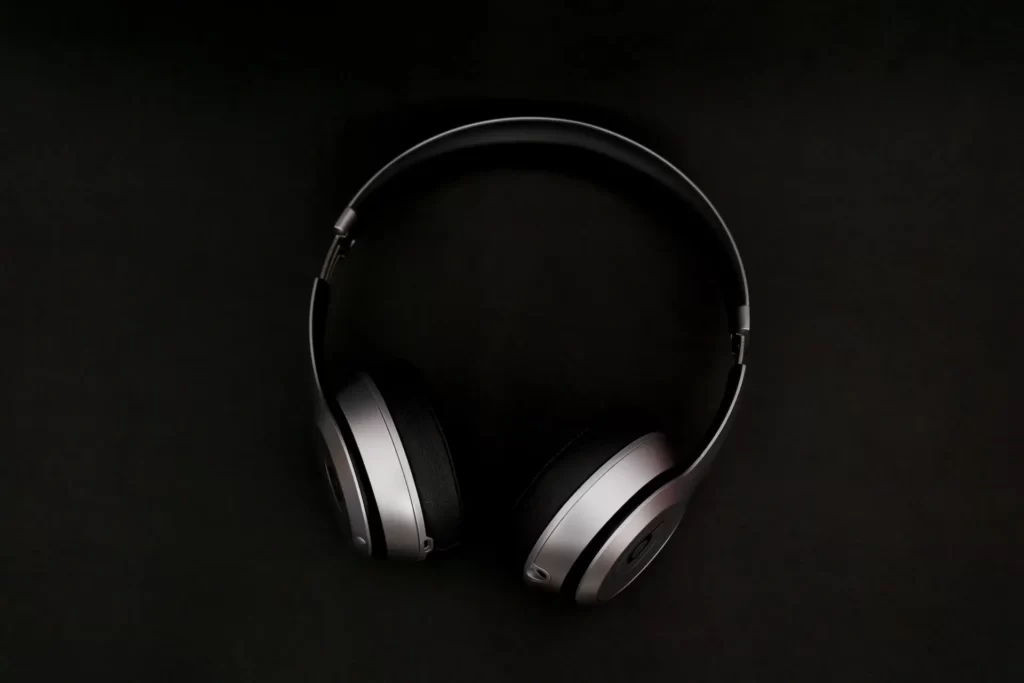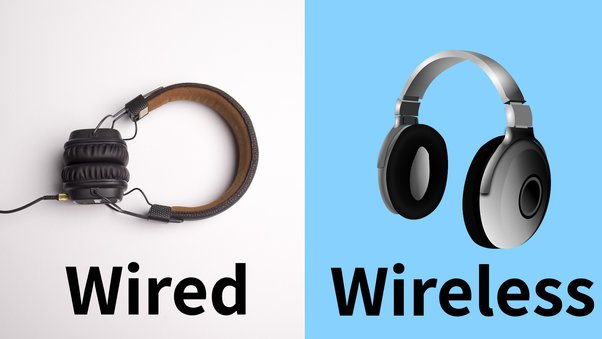Do you ever find yourself in a situation where you want to enjoy your music or listen to an audiobook but don’t want to deal with the headache that comes along with wearing headphones? We all know the frustration of putting on headphones only to have them cause a headache after just a few minutes of wear. But what if you could find that what are headphones that don’t cause these headaches in the first place?
Headaches caused by headphones can be a real nuisance, especially if you’re an audiophile who loves listening to music. But are there headphones that can provide the perfect sound without causing headaches?
Do you find yourself suffering from headaches after a few hours of wearing your headphones? It’s a common problem, but luckily, there are solutions out there that can help. In this article, we will explore what kinds of headphones don’t cause headaches and why they’re the best option for audio enthusiasts.
Common Causes of Headphone-Induced Headaches?

There are a few different things that can cause headaches from headphones, and it varies from person to person.
i. Headphone Too Tight:
For some, it could be the way that the headphones fit on their head or ears. If they’re too tight, they can put pressure on your skull and lead to a headache. You should know how to make headphones fit tighter enough so that they will not put so much pressure on your head.
ii. Sound Quality:
The second common reason for headphone-induced headaches is because of the sound quality. If the good quality is terrible, it can cause a headache.
iii. Headphone’s Volume:
Others might be more sensitive to sound volume, so any type of headphones could cause a headache if the volume is turned up too loud.
iv. Sensitive Body:
Some people might have an allergy or reaction to the materials used in certain types of headphones, which can also cause headaches.
v. Noise Canceling Headphones:
Finally, if you’re using noise-canceling headphones, they can actually make your headaches worse by making your head feel like it’s in a vacuum.
vi. Managing Listening Duration:
Listening to headphones for too long can cause headaches. To avoid this, take breaks every hour and limit your listening time. Giving your ears and head some time to rest can help prevent pain and discomfort. Regular breaks also help keep your hearing healthy in the long run.
What Are Some Headphones that Don’t Cause Headaches?

When it comes to finding headphones that don’t cause headaches, there are a few things you’ll want to keep in mind.
First, it’s important to find headphones that have soft, comfortable ear pads. You’ll also want to look for headphones that don’t apply too much pressure to your head.
Finally, it’s a good idea to choose headphones that have adjustable headbands so you can find the perfect fit.
With those criteria in mind, here are four great headphone options that shouldn’t cause you any headaches:
- The Sony MDR7506 is a popular choice for those looking for comfortable, lightweight headphones. The ear cups are well-padded and the headband is adjustable, making for a very comfortable fit.
- The Bose QuietComfort 25 is another great option for those seeking comfort and adjustability. These noise-canceling headphones have soft ear cups and an adjustable headband, making them perfect for long listening sessions.
- The Sennheiser HD 598 is another excellent choice for headache-free listening. These open-back headphones have extremely soft ear pads and an adjustable headband, making them both comfortable and breathable.
- Finally, the Beyerdynamic DT 770 Pro is a great option if you’re looking for studio-quality sound without any headaches. These closed-back headphones have thick padding on the ear cups and an adjustable headband, ensuring a comfortable fit even during.
Types Of Headphones That Don’t Cause Headaches:

There are a few different types of headphones that don’t cause headaches and these headphones are good for the ears. Some types of them are as follows.
Over-Ear Headphones:
The first type is over-ear headphones. These headphones sit on top of your ears and don’t put any pressure on them. They’re also usually very comfortable and can be adjusted to fit your head perfectly.
On-Ear Headphones:
The second type is on-ear headphones. These headphones sit on your ears but don’t put any pressure on them. They’re not as comfortable as over-ear headphones but they’re still much better than earbuds.
Earbuds:
The last type is earbuds. Earbuds are the least comfortable type of headphones but they’re also the most portable. If you want to avoid headaches, it’s best to stick with either over-ear or on-ear headphones.
Comparing Wired vs. Wireless Headphones for Comfort:

When choosing headphones, you can pick between wired and wireless types. Wired headphones have cables that can sometimes be annoying and uncomfortable. Wireless headphones don’t have cables, so they are easier to move around with, but they can be a bit heavier because of their batteries.
i. Wired Headphones For Comfort:
Wired headphones connect to your device with a cable. They are simple to use and don’t need batteries.
One advantage of wired headphones is that they usually have better sound quality. They are also lighter because they don’t have a battery. You never have to worry about charging them, and they often cost less than wireless headphones.
However, wired headphones can be less comfortable because the cable can get in the way. The cord might pull on the headphones, making them feel heavy or awkward. This can make them less comfortable to wear for long periods compared to wireless headphones, which offer more freedom of movement.
ii. Wireless Headphones For Comfort:
Wireless headphones connect to your device without needing a cable. They offer freedom of movement and are convenient to use.
One advantage of wireless headphones is their flexibility. Since they don’t have cables, you can move around more easily without getting tangled. They are also great for activities like exercising or walking around the house.
However, wireless headphones can sometimes be heavier because they contain a battery. This extra weight might make them less comfortable to wear for long periods compared to wired headphones, which are usually lighter. Additionally, wireless headphones need to be charged regularly, which can be inconvenient if you forget to charge them.
Comparing Both Comfort:
In short, both wired and wireless headphones have their pros and cons when it comes to comfort. Wired headphones are often lighter and don’t require charging, but the cable can sometimes get in the way and feel cumbersome.
On the other hand, wireless headphones offer freedom of movement but may be heavier due to the battery and require regular charging. It ultimately depends on your preferences and how you plan to use them.
Tips to Reduce Headache Pain from Wearing Headphones
If you experience headaches when wearing headphones, there are a few things you can do to help reduce the pain.
- First, make sure that the headphones fit properly and aren’t too tight.
- Second, try using headphones that have soft, cushioned ear pads.
- Finally, take breaks from wearing headphones every few hours to give your head a rest.
If your headaches persist, you may want to see a doctor to make sure there isn’t a more serious cause.
How to Choose the Right Headphones For Your Needs?

Choosing the right headphones is important if you want to avoid headaches. There are a few things to consider when choosing headphones, including:
1. The Type of Headphones:
There are three main types of headphones: in-ear, on-ear, and over-ear. In-ear headphones are the smallest and most portable, but they can be less comfortable for some people.
On-ear headphones are a middle ground between in-ear and over-ear headphones, and they may be more comfortable for some people. Over-ear headphones are the largest and most comfortable, but they can be less portable.
2. The Size of the Earcups:
The ear cups should fit snugly around your ears without putting too much pressure on them. If the ear cups are too small, they will not be able to block out all noise, which can lead to headaches. If the ear cups are too large, they may put too much pressure on your head, which can also lead to headaches.
3. The Style of the Headband:
The headband should be comfortable and adjustable so that it can be worn for long periods of time without causing pain. And If they get dirty, then you should know how to clean the headphone’s headband.
Once you have considered these factors, you should check out different pairs of headphones until you find one that is comfortable and works well for you.
Conclusion:
We hope this article has helped you understand what are headphones that don’t cause headaches and given you some options to consider. From lightweight over-ear models to noise-canceling earbuds, there are plenty of styles that won’t leave your head pounding after a listening session.
Additionally, using wireless over-ear headphones can provide superior comfort and sound quality without putting too much pressure on your head or causing discomfort.
Be sure to do your research, try on different types of headphones, and find the option that works best for you so that you can enjoy music without any uncomfortable side effects.
FAQs:
i. Why do my headphones give me a headache?
Wearing headphones for a prolonged period can cause discomfort or headache due to pressure on the ears, tension in the neck, or high volume.
It is recommended to take breaks, adjust the volume to a comfortable level, and use your headphones with cushioning for better comfort. In this way, you will not get any headaches from your headphones.
ii. What is the healthiest type of headphones?
A pair of headphones that is comfortable and cushioned to reduce pressure on the ear and head is the healthiest.
Over-ear headphones are generally better than in-ear headphones, as they distribute weight more evenly and can help reduce the risk of hearing damage if used at a reasonable volume.
In addition to avoiding tangling wires and neck strain, wireless headphones may also be a better option.
iii. Which headphone is not harmful?
There is no headphone that is 100% free of risks, but over-ear headphones with cushioning and noise-cancellation features may be less harmful than others.
It is important to use headphones at a safe volume take breaks to avoid hearing damage, and choose headphones with materials that are not likely to cause skin irritation or allergies.
iv. What is the safest headphone radiation?
There is general consensus that headphones do not cause any harm to the human body and are considered to be safe.
However, some studies suggest that wired headphones may emit lower levels of radiation than wireless headphones due to the use of Bluetooth technology.
It is important to use headphones at a safe volume and take breaks to avoid hearing damage, regardless of the type of radiation emitted.
v. How do I choose the right headphones?
When choosing headphones, consider factors such as comfort, sound quality, type of headphones (over-ear, in-ear, or on-ear), noise cancellation, and connectivity options.
Moreover, you should consider how the headphones will be used, whether it is for gaming, music, or calls, and choose headphones that suit your needs and budget.
Taking the time to read reviews and try out headphones before making a purchase will also help you make an informed decision.

